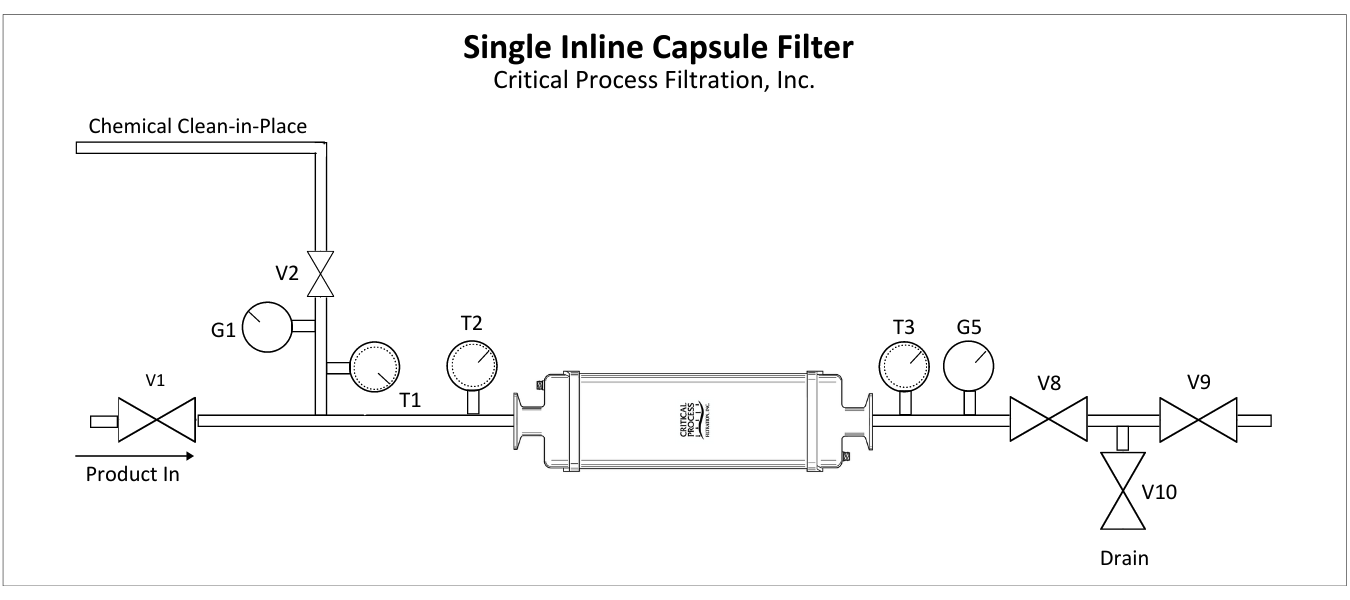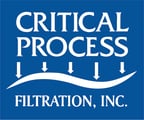Before capsule filter cleaning, sanitization, and sterilization, please note:
- Capsule filters may be cleaned and sanitized by autoclaving or compatible chemical treatment.
- DO NOT clean and sanitize capsule filters using hot water or in-line steam.
- Gamma irradiated pre-sterilized capsules cannot be autoclaved for reuse.
Autoclave Instructions
- Remove or loosen the capsule vent/drain caps
- Any connected equipment also requiring sterilization (tubes, valves, etc.) must be properly supported to prevent deformation of capsule components during heat cycle
- Avoid connecting heavy, unsupported equipment that may cause deformation of the capsule at sterilization temperature
- Consider that the assembly should ideally be placed in the autoclave with the capsule oriented vertically
- If both ends of the assembly are not open, improper evacuation of air and buildup of excess condensate may occur, limiting the effectiveness of the autoclave cycle
- If using sanitary connections, do not overtighten clamps. Use plastic clamps or 3- segment metal clamps whenever possible
- Ensure tubing is not kinked, connected in a loop, or oriented in a way that will prevent drainage of condensate
- Ensure that both ends (inlet and outlet) of the assembly are open and protected with autoclave paper or sterilization wrap
- Place the filter assembly in the autoclave, with the flow direction arrow on the capsule pointing down. If this orientation is not possible, ensure that either the drain or vent valve is positioned in the autoclave as the low point of the assembly to allow for condensate drainage. Do not autoclave a capsule with the flow indicator pointing up; this can lead to condensate build up in the core and incomplete sterilization
- The filter assembly should be autoclaved for the minimum conditions below, using a slow exhaust autoclave cycle when possible. CPF does not recommend autoclave sterilization cycles that exceed 125 C.
- 30 minutes at 121°C for vacuum cycles
- 60 minutes at 121°C for non-vacuum cycles
Note: Critical Process Filtration recommends validating the sterilization cycle, especially when autoclaving assemblies. For assistance with validation of autoclave and other sterilization processes, please contact Critical Process Filtration.
- When the autoclave cycle is complete, allow the assembly to cool to room temperature
- If required, integrity testing can be performed before or after installing the capsule

Chemical Cleaning
The following chemicals are compatible with CPF capsule filters and may be used to sanitize the filters if used according to the chemical manufacturer’s directions.
- Hydrogen Peroxide / Peracetic Acid (1:100 solution)
- Hydrogen Peroxide (10%)
- Sodium Hypochlorite (1:100 dilution – 500 to 600 ppm free chlorine) - Do not use for nylon membrane filters
- Glutaraldehyde (up to 3.4% Solution)
The diluted disinfectant solution should be pumped through the filters as part of the system disinfection or sanitization. Rinse filters and system thoroughly with sterile water before placing the filters and system back into service. Assure that residual sanitizer solution has been rinsed from the system through the use of test strips or other suitable method.
NOTE: As filters become fouled, the concentration of the chemical sanitizer may need to be increased as the sanitizer may be exhausted by contaminants on the filter. If using chemical sanitization for a system, sampling methods should be in place to assure effective sanitization.
Use sterile gloves when handling chemicals and/or filters during the sanitizing and disinfection process.
Consult the Material Safety Data Sheet for each chemical before use. Make sure the system is free from other chemicals that may react with the chosen solution before beginning the sanitization process.
